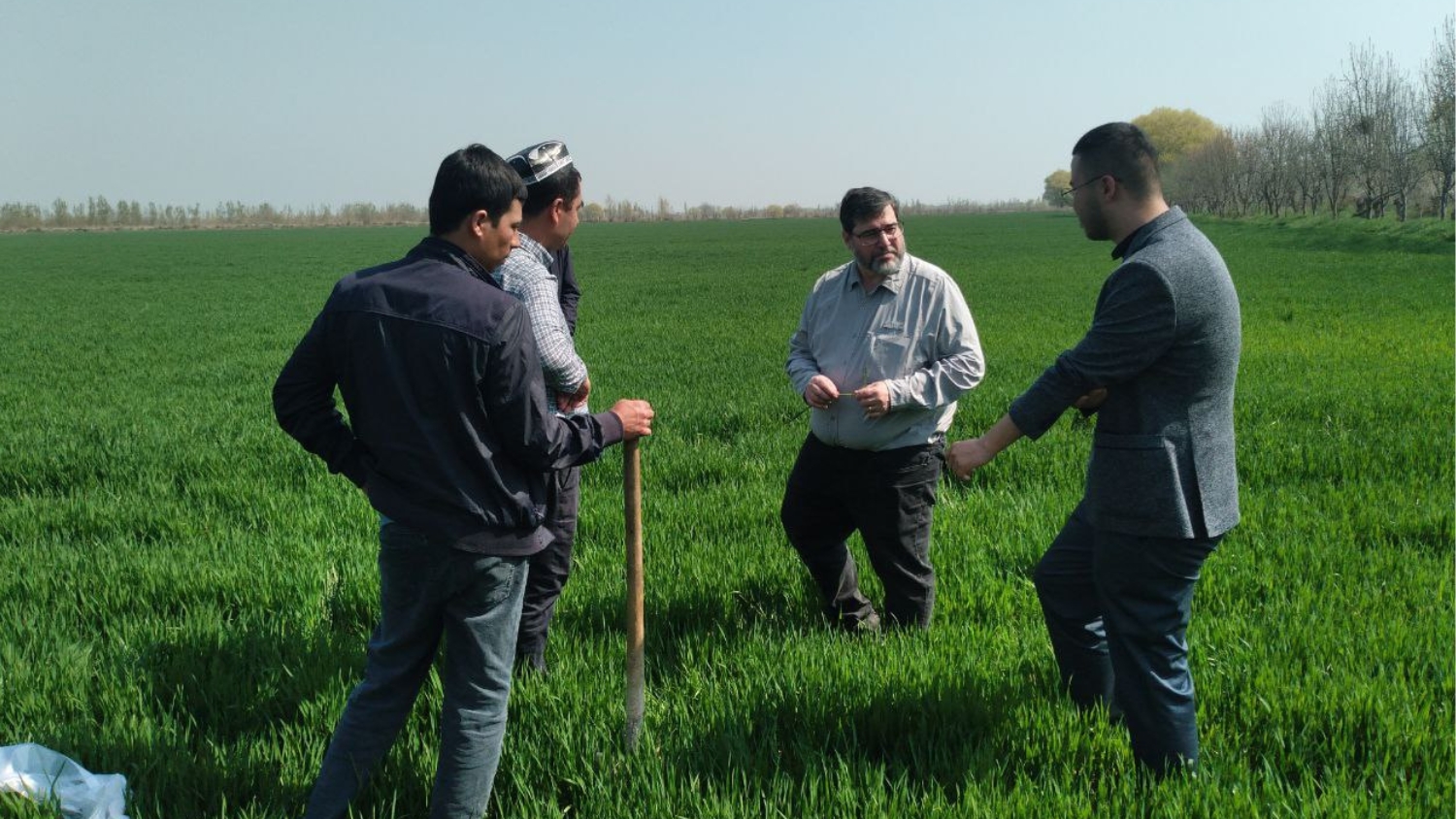
Improving agricultural soils uplifts economies and families. The United States Agency for International Development (USAID) program seeks to create resiliency and self-reliance in developing countries. Their agriculture and food security program, Feed the Future, focuses on creating reliable food production and revenue sources for food security.
In March, North Carolina State University Associate Professor Luke Gatiboni spent two weeks volunteering with USAID to train Uzbek farmers in an effort to return a lifelong favor.
New Thinking Boosts Crop Productivity
Growing up in a farm family in Brazil during the 1970s, Gatiboni witnessed the powerful economic impact of agriculture. The tropical and subtropical soils of Brazil had been classified as “useless for modern agriculture” in the 1950s because of their acidic, nutrient-poor soils.

Attempts to grow crops using traditional methods failed until the 1970s when NC State and Cornell University started their Tropsoils program, spread through USAID. They brought new soil fertility strategies to jump-start Brazilian soils, and the ideas worked. Today, Brazil is in the world’s top 5 producers of soybeans, corn, coffee, oranges, sugarcane and many other crops.
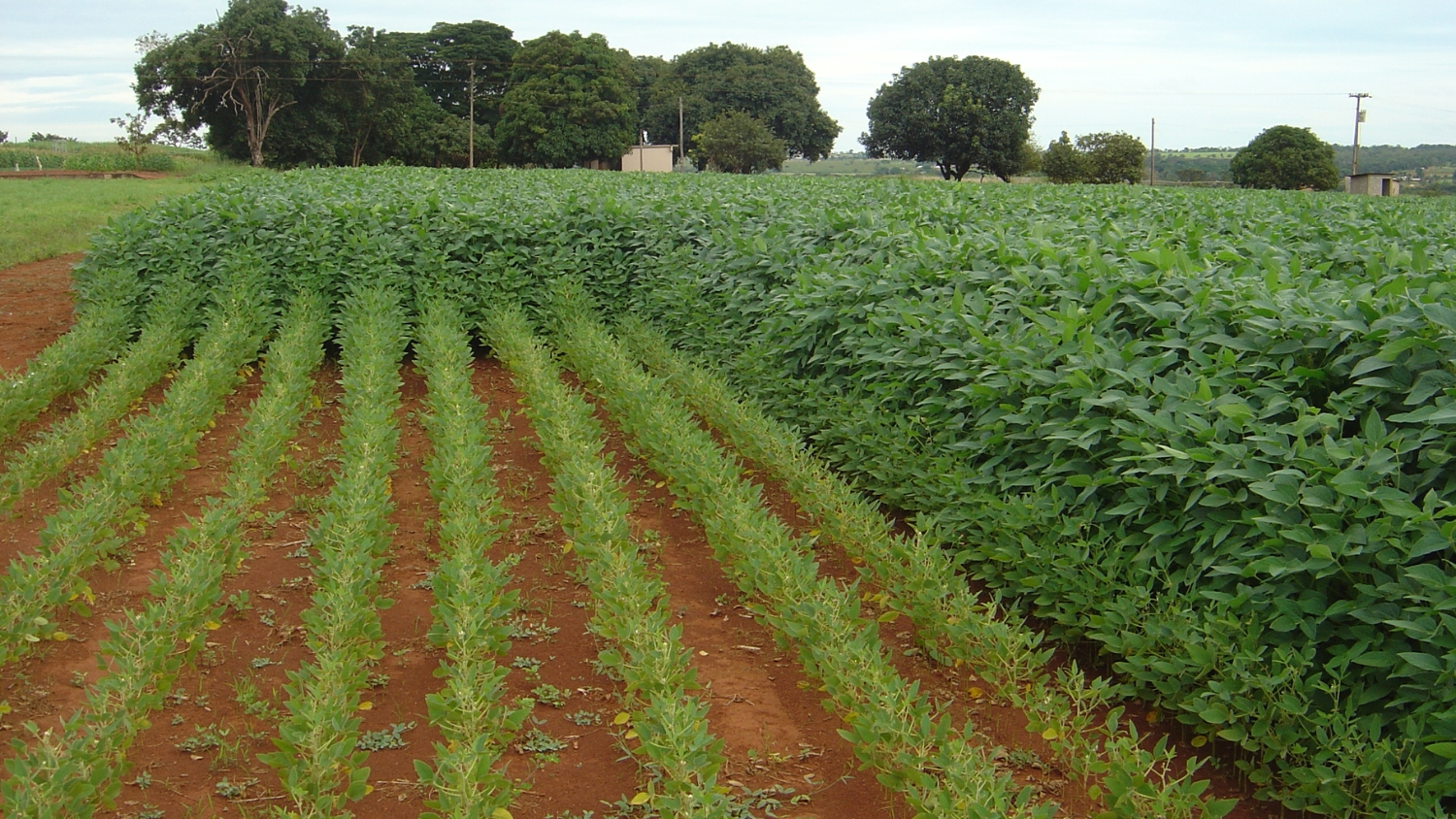
Yes-First Volunteerism
“USAID sponsors the farmer-to-farmer program that uses volunteers to train others, creating a daisy chain that spreads knowledge through trusted sources,” Gatiboni said. ”USAID programs benefited Brazilian farmers in a big way, including my family. It inspired me to pursue education in agronomy, so I wanted to give back some of what USAID did for Brazilian agriculture.”
When Gatiboni got a call from USAID looking for volunteers, he said yes — and then asked where and what.
“They wanted advisors to help farmers with agricultural fertilizers. That’s what I do every day at NC State, so it was a right fit. But after I hung up the phone, I next did a Google search to figure out where I was going,” Gatiboni laughed.

Uzbekistan’s Water Woes
Uzbekistan is a former Soviet country double-landlocked by neighboring states from ocean trade routes. In an arid region with less than 12 inches of annual rainfall (compared to North Carolina’s 40-60 inches), it has a major plumbing problem.
In an environmental disaster, the Aral Sea, Uzbekistan’s primary water source, shrunk from the world’s fourth-largest lake to less than 10% of its original size due to irrigation overuse producing Soviet cotton.

A Crowded Fertile Valley
One of the few remaining productive farmland areas in central Asia is the Ferghana Valley. It is historically significant as a prime caravan stop for mountain-weary travelers along the ancient Silk Road trade routes between China and Europe.
The population-dense area (7,500 square miles) is irrigated from neighboring mountain snowmelt dams through a series of hand-dug canals and ditches.
Every acre of the limited landscape is dedicated to agriculture, including vertically. Residential alleys are lined with grape arbors producing sun-dried raisins.
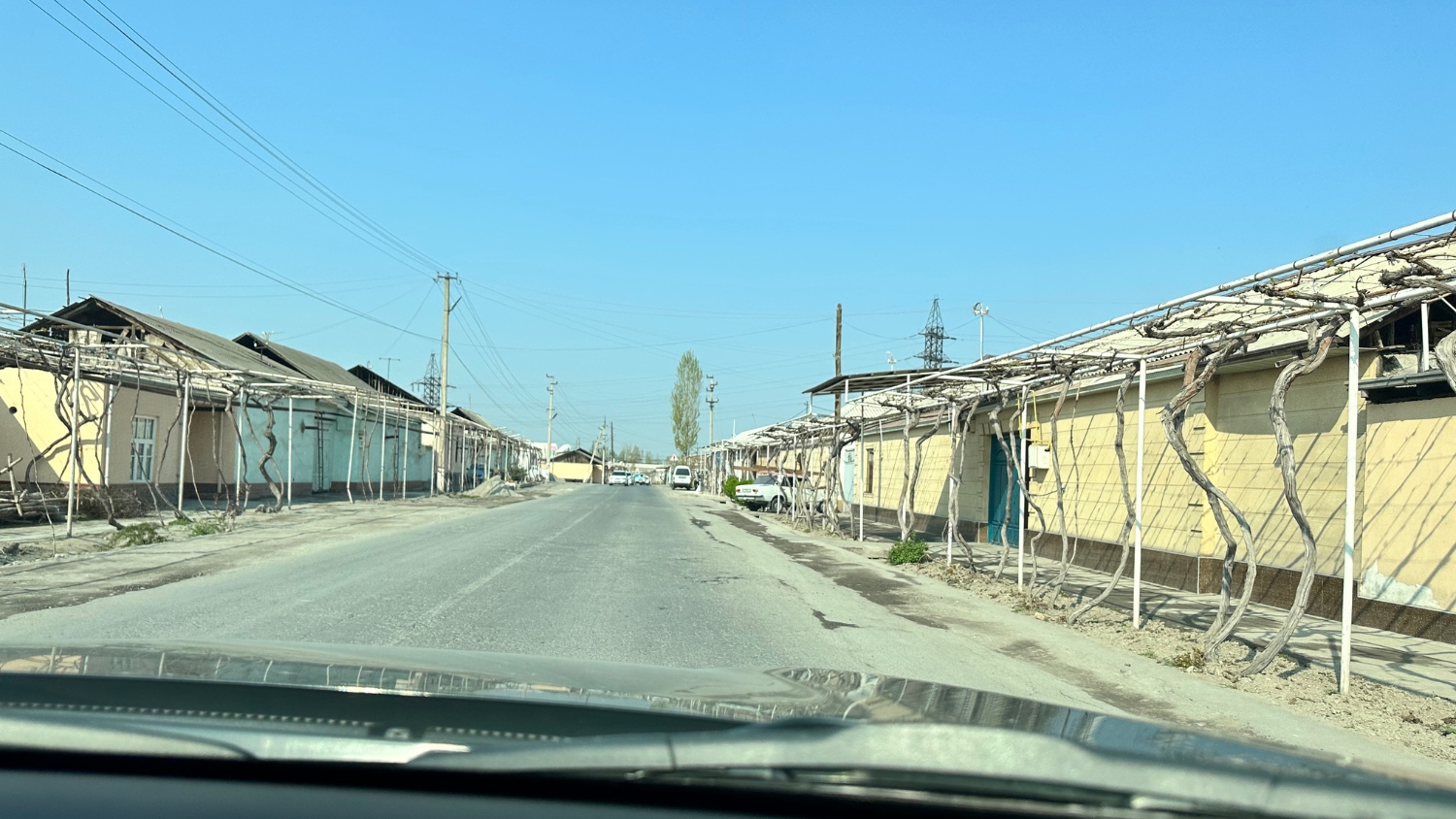
Modernizing Soil Fertility Practices
Since separating from the Soviet Union in 1991, Uzbek farmers are transitioning from Soviet-mandated cotton and wheat to higher-value crops like fruits (especially cherries, raisins and apricots), vegetables and spices.
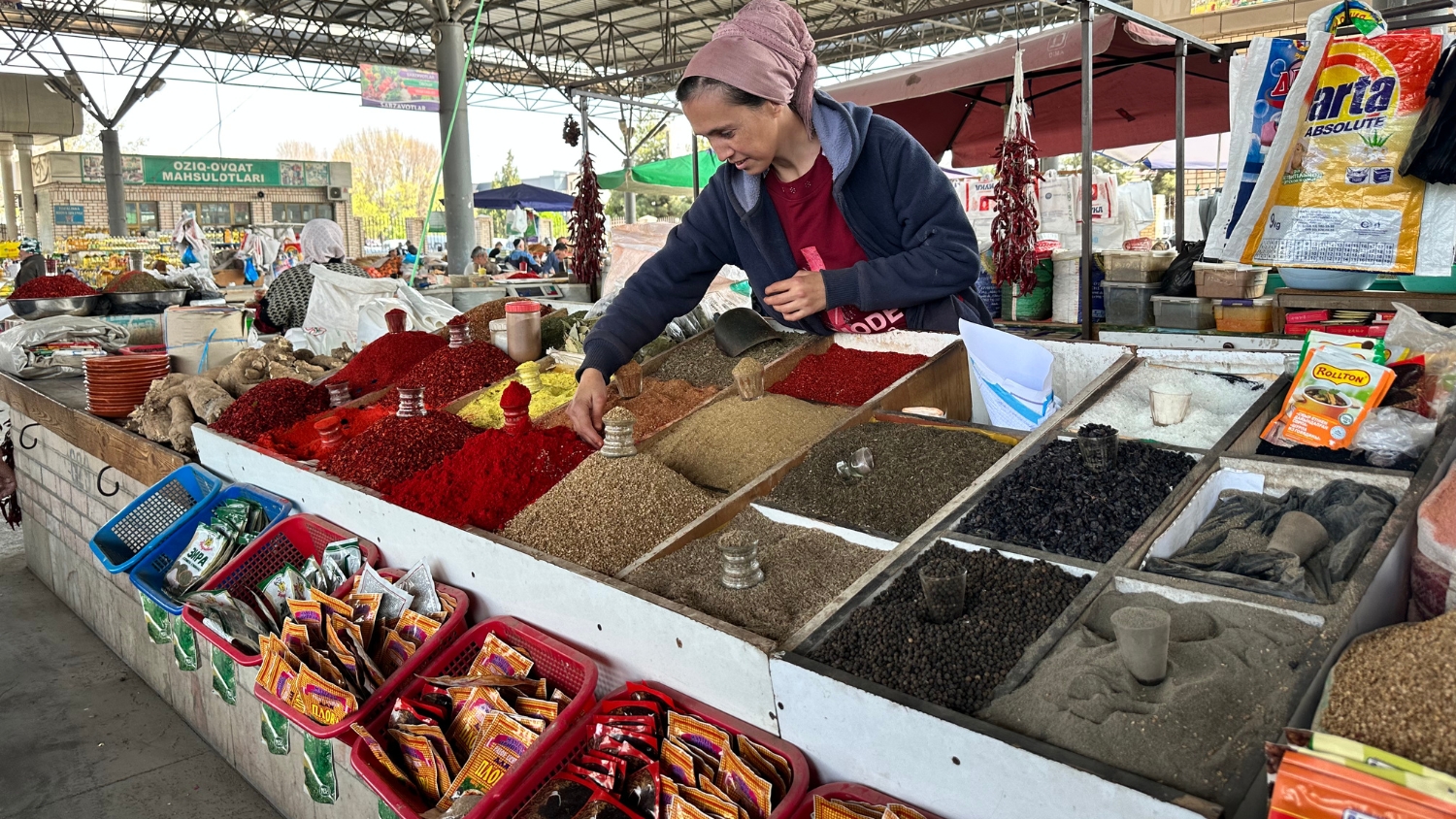
But old management habits die hard.
“No soil analysis is used, so farmers don’t know how much nutrients they need to apply. Farmers continue to use a soil fertility ‘recipe’ dictated for cotton, which grossly overuses the three macronutrients, nitrogen, phosphorus, and potassium, with no micronutrients.”
Gatiboni met with a 35-farmer group to learn (through an interpreter) about local farming practices and challenges. Salty soils are a major concern. Uzbekistan’s soils are naturally higher in salt content, but land management intensifies the problem.
Ferghana Valley’s irrigation water is reused throughout the valley’s channel system. The water becomes saltier from each farm along the channel route, so much so that fallow land must be flushed three to five times before planting. This removes some salt but, unfortunately, also nutrients.
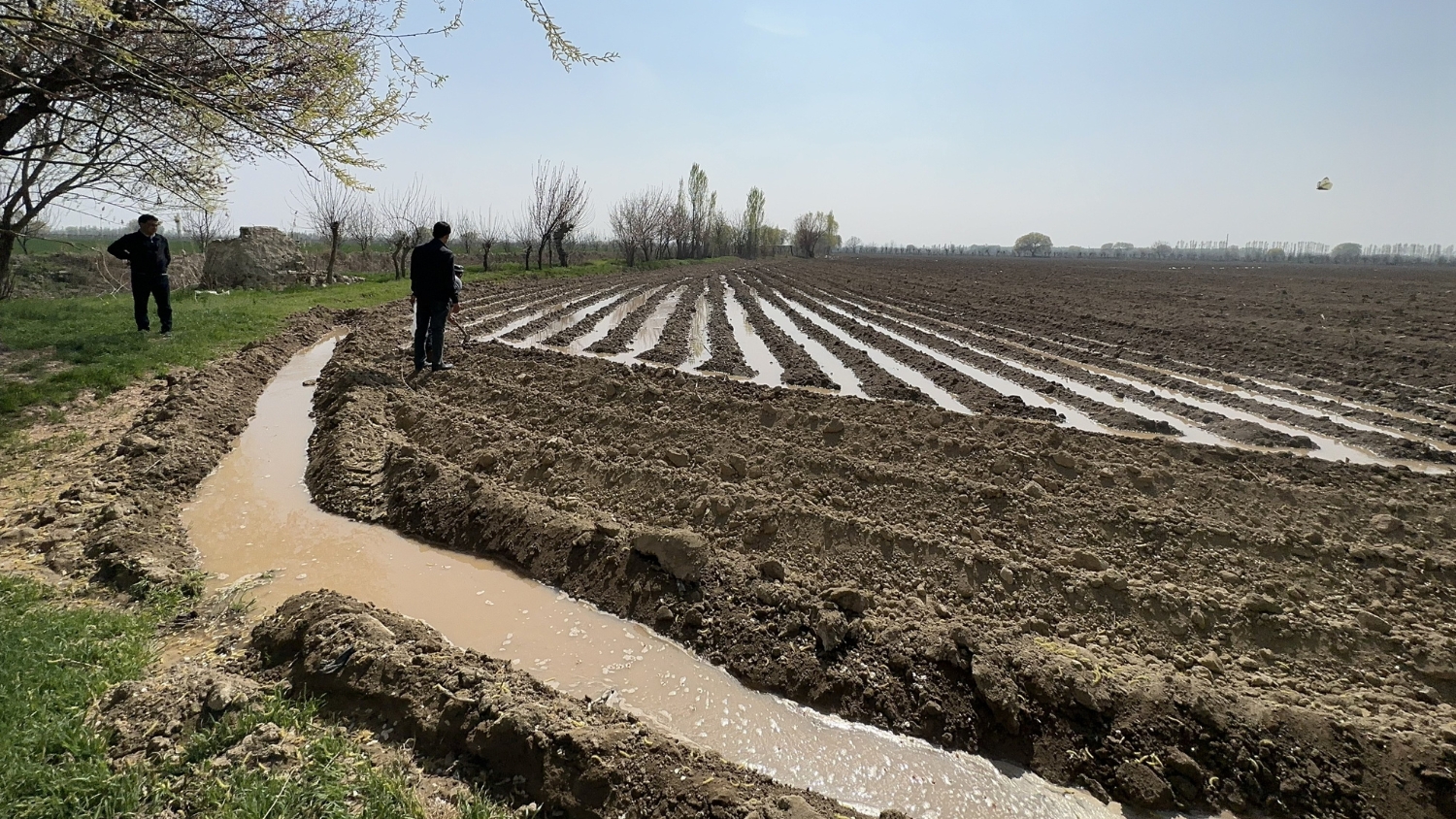
Gatiboni also found that the only local soil lab had good equipment but outdated methodology. He spent days alternately training soil lab technicians and private agronomists on soil analysis, testing calibration and new technology in fertilizers. He ended the trip with academic presentations at Ferghana State University, Andijan Agrotech University and Tashkent Agrarian University.

Gatiboni left Uzbek farmers with five recommendations: start adding micronutrients to their fertilization program, use soil analysis to determine fertilizer type and rates, reduce phosphorus fertilization by 30%, manage irrigation to avoid nitrate leaching, and use on-farm test strips to evaluate reducing nitrogen fertilization by 20%.

The Wheels Are Turning
The information Gatiboni shared was eagerly received. Now, two months after the visit, he is already receiving soil test reports from Uzbek farmers and is helping to refine their fertilizer programs.
“It is a good sign that the activities are producing actions towards better soil fertility and plant nutrition management,” Gatiboni said. “They have asked me to return in December. I would like to go back and evaluate the impact these changes are making for the farmers.”

In the interim, a USAID team remains on the ground in Uzbekistan to follow up with farmers and incentivize practice adoption.
Want More Global Impact?
Crop and Soil Sciences’ research impacts farmers, students, and countries around the world through innovations in food, feed, fuel, and fiber. Follow how our discoveries affect agriculture and environmental science by joining our weekly newsfeed.
If you are a student interested in agronomy or crop production, investigate our undergraduate and graduate degree programs. Then join us for a guided email tour of our department and university.
Improving the world’s agricultural economy through science is just part of how we are growing the future.